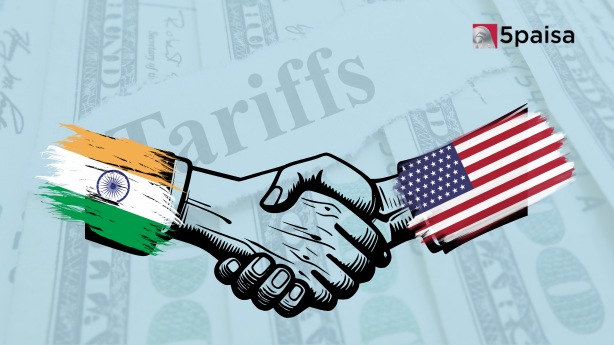Premier Energies and Waaree Energies Plunge Up to 7%: F&O Blues and Brokerage Pressure
Stock Markets Waver Amid Modi-Trump Relations
Last Updated: 17th February 2025 - 03:02 pm

When Narendra Modi visited Donald Trump last week, the warmth and camaraderie seen in past meetings were noticeably absent. The enthusiastic hugs exchanged at the White House Rose Garden in 2017 and the hand-holding display at the 2019 “Howdy Modi” event in Houston were missing this time. Though the Indian prime minister arrived with trade concessions involving Harley-Davidson motorcycles and Tesla vehicles, he was met by the U.S. president wielding a heavy tariff policy.
Trump’s New Tariff Strategy
Trump set the tone for the highly anticipated meeting by announcing reciprocal tariffs just before greeting Modi. Under this policy, the U.S. would impose duties on foreign goods equivalent to the rates those nations applied to American exports.
This move is even more severe than the universal tariff Trump had proposed during his campaign, which would have impacted all trading partners equally. Instead, the new measure disproportionately affects India. Analysts at Kotak Mahindra Bank in Mumbai estimate that tariffs on India’s top ten exports to the U.S.—including iron, steel, auto components, pearls, gemstones, and mineral fuels—could rise by 6 to 24 percentage points, averaging a seven-point increase overall.
Impact on India’s Economy and Stock Markets
India’s loss of competitiveness in its largest export market may further weaken its currency. Fearing reduced dollar inflows, global investors might increase the nearly $11 billion they have already pulled from Indian markets this quarter. Capital outflows could complicate efforts to lower interest rates amid a slowing economy. Domestic retail investors, who have so far kept stock prices from plummeting, may also start selling, especially after a leading local fund manager advised them to exit small-cap stocks entirely.
Negotiation Window Before Tariffs Take Effect
These reciprocal tariffs are set for review on April 1, giving Modi a window to negotiate a trade agreement. However, this is likely to require further concessions, potentially including approvals for Elon Musk’s Starlink satellite broadband service. Additionally, Trump is pushing India to purchase more U.S. military equipment, such as the F-35 fighter jet. New Delhi has already agreed to amend its civil liability law, which has stalled Westinghouse Electric Co.’s nuclear reactor projects for over a decade.
Beyond Tariffs: Trump’s Expanding Demands
The challenge for India is that Trump’s demands may extend beyond tariff reductions. He could also push for changes in subsidies, regulatory policies, value-added taxes, exchange rates, and intellectual property enforcement. While addressing some of these issues could help India’s economy by making domestic conglomerates more competitive, the pressure to import more U.S. oil and gas could strain both its trade balance and renewable energy goals.
India currently sources half of its liquefied natural gas imports from the Persian Gulf. If its industries—including fertilizer producers, refineries, petrochemical firms, and steel manufacturers—are compelled to increase their reliance on U.S. LNG (currently at 11%), they would face higher transportation costs, driving up the country’s import expenses. This shift comes at a time when India is actively promoting solar- and wind-powered green hydrogen as an alternative to fossil-fuel-derived gray hydrogen.
Reviving the India-Middle East-Europe Economic Corridor
During a joint White House press conference with Modi, Trump discussed new U.S.-India trade routes passing through Italy and Israel. This revival of the India-Middle East-Europe Economic Corridor—stalled since its 2023 launch—could benefit Gautam Adani, Asia’s second-richest entrepreneur. Adani, who controls Israel’s Haifa port and is seeking European expansion, may find opportunities in the initiative.
Stock Market Reactions and Economic Concerns
Despite these developments, stock markets remain skeptical. Shares in Adani’s flagship company and its port division have dragged down India’s benchmark index this quarter. After years of strong growth, Indian equities are now struggling due to weak corporate earnings. Even a recently announced $12 billion tax rebate has failed to lift consumer sentiment. Economic concerns are becoming more pressing.
- Flat ₹20 Brokerage
- Next-gen Trading
- Advanced Charting
- Actionable Ideas
Trending on 5paisa
01
 5paisa Capital Ltd
5paisa Capital Ltd
Indian Market Related Articles
Disclaimer: Investment in securities market are subject to market risks, read all the related documents carefully before investing. For detailed disclaimer please Click here.




